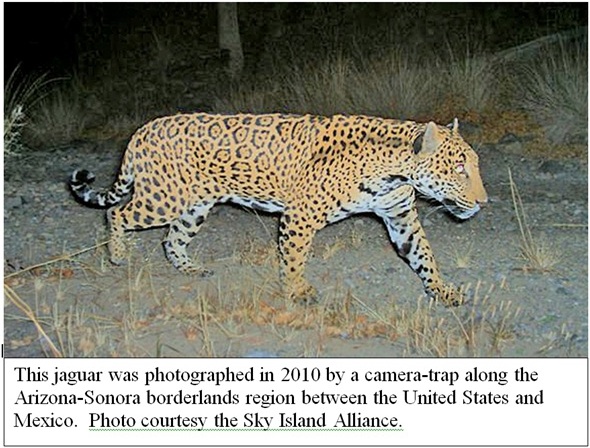SCB Calls for Additional Critical Habitat to Recover Jaguars Within the United States
October 19, 2012. Today, the Society for Conservation Biology submitted comments on the U.S. Fish and Wildlife Service’s (FWS) proposed critical habitat for the jaguar (Panthera onca).
The FWS has proposed to designate approximately 840,000 acres (1,250 square miles) of extreme southeast Arizona and southwest New Mexico as critical habitat for the jaguar. Despite the fact that the jaguar once roamed the southern United States from California eastward to Louisiana, the FWS has chosen to focus on only a small portion of the species’ historic range within the United States. While 840,000 acres is a positive first step, this area is not likely to be large enough to support self-sustaining populations of jaguars in the United States, which is required to meet the recovery objectives of the Endangered Species Act. Accordingly, SCB is offering the following recommendations to the FWS:
- Critical habitat for the jaguar should include areas representing each of the unique biogeographic ecoregions from which the jaguar has been extirpated in order to achieve recovery of the species within the United States.
- FWS should designate critical habitat to maintain and restore connectivity between proposed critical habitat units within the United States for the jaguar.
- The FWS critical habitat proposal intimates that ranching activities will not jeopardize the jaguar or adversely modify any critical habitat. Given the documented negative effects that overgrazing has had on native ecosystems in the southwest United States, and the need to more carefully manage grazing on such public lands, this overly broad conclusion by FWS appears to be unsupported by scientific literature and should be removed from the final critical habitat determination.
- FWS should include by reference in the jaguar's designated critical habitat any habitat that Mexico has deemed essential for the jaguar to insure that any U.S. agency actions affecting those areas in Mexico do not adversely modify that jaguar habitat.
Read the comments HERE.
